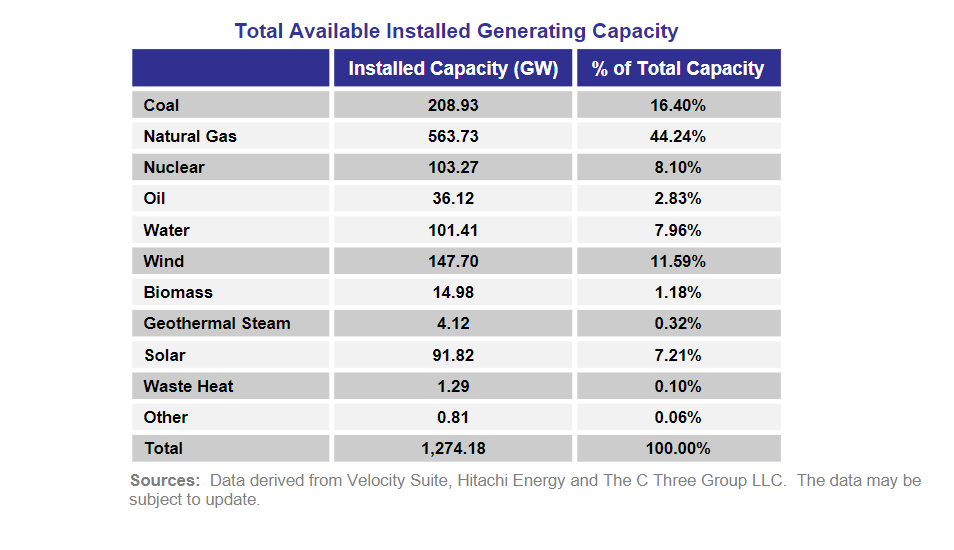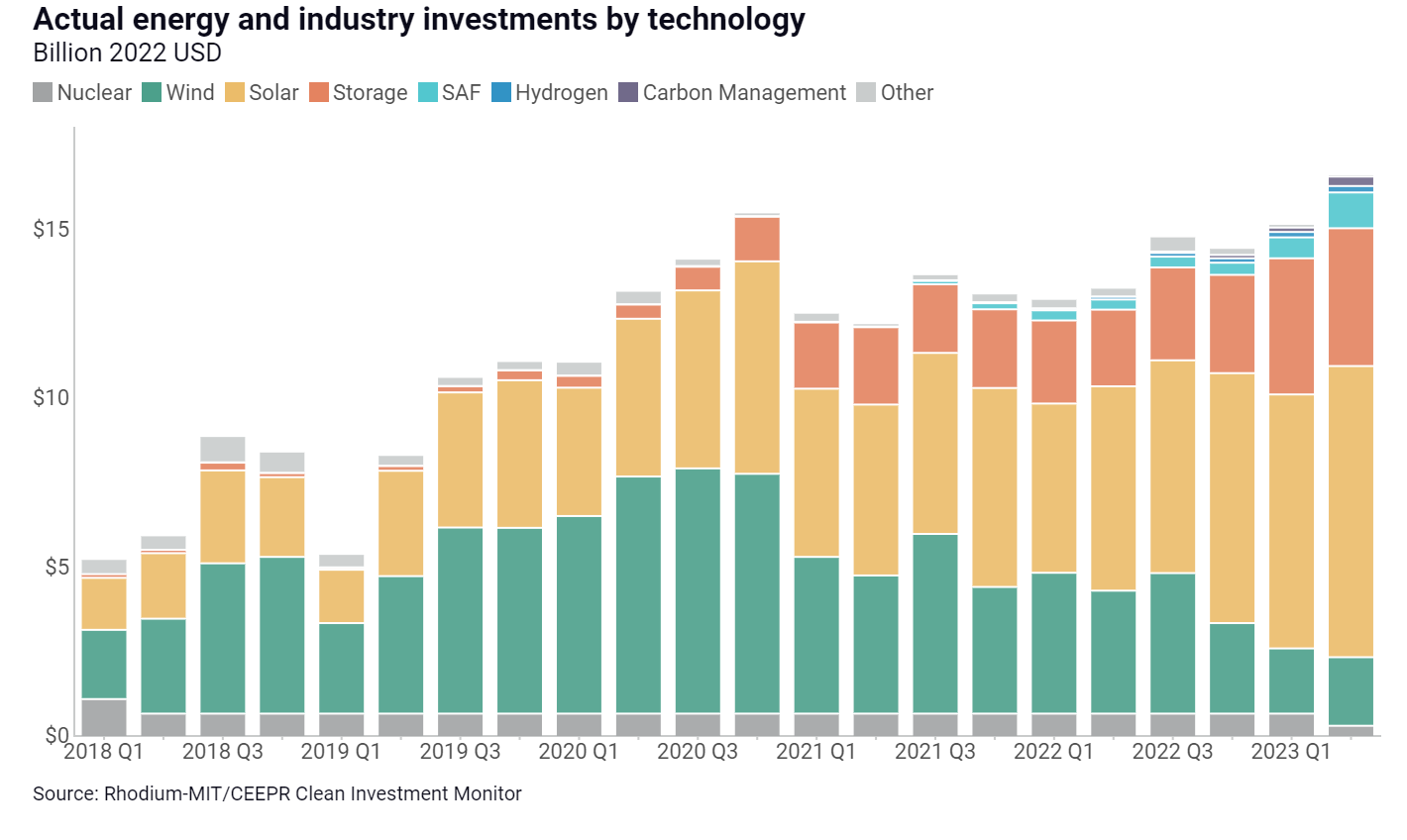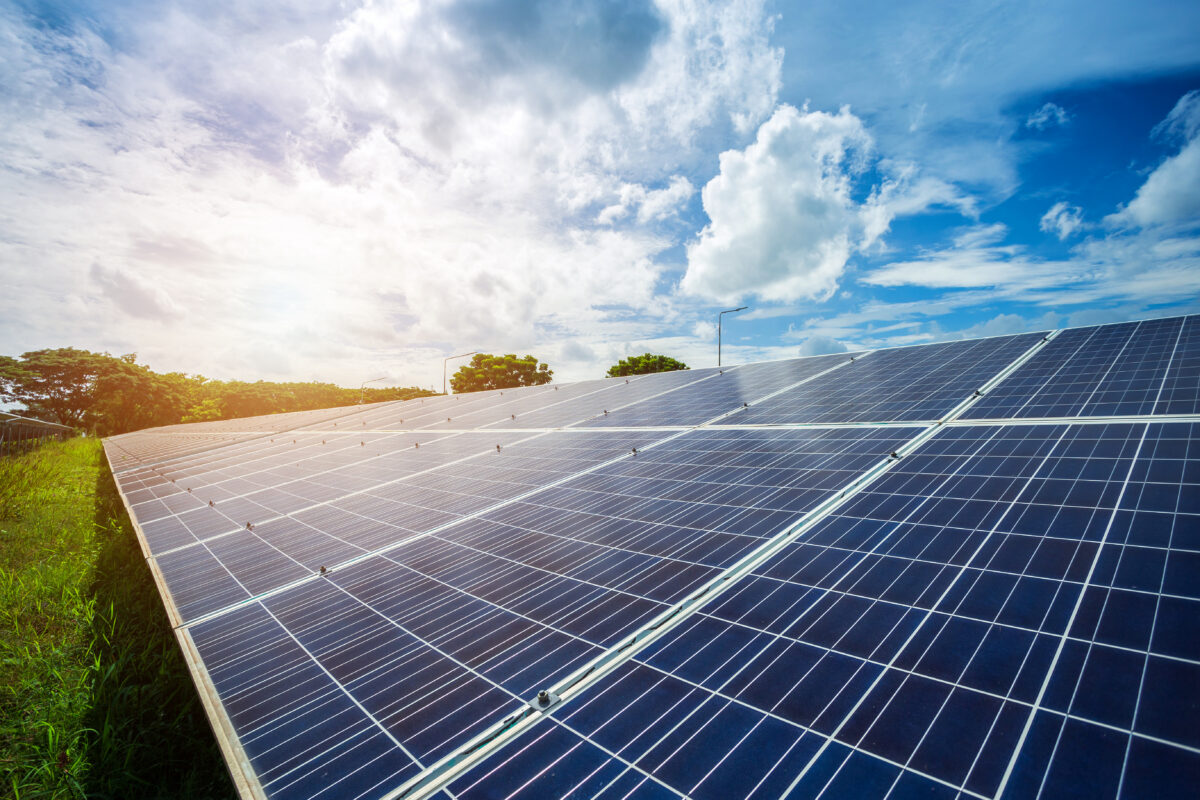The Federal Energy Regulatory Commission (FERC) released its Energy Infrastructure Update report, noting that solar holds the largest share of capacity additions in the energy mix in the United States.
In 2023 through August 31, just under 9 GW of solar capacity was added, representing 40.5% of all capacity additions. This represents 36% growth year-over-year.
Wind power provided an additional 2.7 GW, about 12.5% of new capacity additions. When including solar, wind, hydropower, geothermal, and biomass, renewable energy sources contributed 54.3% of capacity additions.
Much growth lies ahead for decarbonized energy to push out fossil fuel sources. For total available installed generating capacity, natural gas remains the leader. Over 44% of available electricity generation capacity comes from natural gas, followed by coal (16.4%), wind (11.6%), hydropower (8%), and solar (7.2%).

FERC forecasts strong growth in solar for years to come. It expects over 83 GW of “high probability” solar capacity additions through August 2026. This dwarfs the 4 GW of natural gas additions expected through that date.
FERC said that the 83 GW of “high probability” solar additions may be quite conservative. There is over 214 GW of solar additions in the three-year project pipeline.
Natural gas has 564 GW available installed capacity today, while solar has 92 GW. Looking ahead three years, if solar were to add all the projects in the pipeline to the grid, it would reach 306 GW. The data suggests that with a healthy ramp-up of projects, solar could feasibly push out natural gas as the number one provider of electricity by 2030.
Investment
Reaching status as the number one provider of electricity will take significant funding. A report from Rhodium Group and the Massachusetts Institute of Technology (MIT) showed that the United States’ total investment in clean energy, clean transportation, building electrification and carbon management reached $213 billion over the last year (from July 1, 2022 to June 30, 2023).
The $213 billion invested represents a 37% leap over 2021/2022 investments of $155 billion. Clean investment continues to strongly increase each year. In 2018/2019, total investments reached $81 billion, and it has climbed each year since.
Domestic manufacturing of clean energy technologies has become an increased focus in recent years, and rich tax credits and incentives have served as an attracting force. Manufacturing investments totaled $39 billion in 2022/2023, more than doubling the $17 billion invested in the previous report period.
Solar represented the largest energy and industry investment category in Q2 2023, attracting $8.62 billion. This was followed by storage with $4.08 billion, and wind with $2.03 billion.

This content is protected by copyright and may not be reused. If you want to cooperate with us and would like to reuse some of our content, please contact: editors@pv-magazine.com.









By submitting this form you agree to pv magazine using your data for the purposes of publishing your comment.
Your personal data will only be disclosed or otherwise transmitted to third parties for the purposes of spam filtering or if this is necessary for technical maintenance of the website. Any other transfer to third parties will not take place unless this is justified on the basis of applicable data protection regulations or if pv magazine is legally obliged to do so.
You may revoke this consent at any time with effect for the future, in which case your personal data will be deleted immediately. Otherwise, your data will be deleted if pv magazine has processed your request or the purpose of data storage is fulfilled.
Further information on data privacy can be found in our Data Protection Policy.